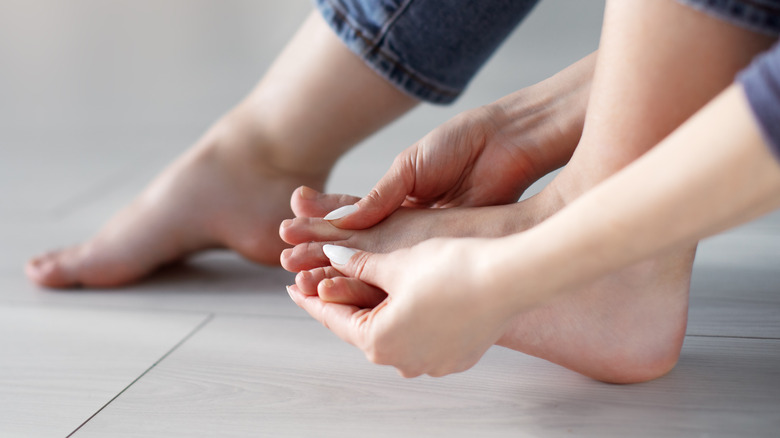Why Your Big Toe Really Hurts
Dealing with body pain in any form can be both extremely alarming and uncomfortable, especially when the pain is localized to a high-functioning part of the body such as the foot. There are a variety of conditions that are linked to pain in the foot or toes. But, what does it actually mean if your big toe really hurts?
According to the American Orthopaedic Foot & Ankle Society, the most common cause of pain in the big toe is a condition known as hallux rigidus, which is sometimes referred to as big toe arthritis. Symptoms of this condition include difficulty moving the big toe, swelling of the area, and a painful bump on top of the big toe. Hallux rigidus affects around one in 40 people over the age of 50 and is more common in females than males.
Per Medical News Today, some other possible causes of big toe pain include an ingrown toenail, which can occur when a person wears tight shoes or cuts their toenail too short, as well as a condition known as gout, which causes pain in the body when uric acid builds up in a person's joints.
Here's when to seek medical attention for your big toe pain
Some other conditions that can be attributed to pain in the big toe include sesamoiditis (which is brought on when tendons below the toe become inflamed or irritated), fractures or breaks of the big toe, and bunions, which is a deformity of the joint toward the base of a person's big toe.
According to Medical News Today, it is advised that you pay a visit to your doctor if the pain in your big toe is unexplained, is persistent, or is caused by a sudden injury. While seeking medical attention, the root cause of the pain will first be determined by a medical professional, and a number of possible treatment options will soon follow.
Per the NHS, a doctor might suggest resting or raising your foot whenever possible, applying ice to the affected area for 20 minute intervals every two to three hours, taking paracetamol, wearing comfortable shoes that are wide and have a soft sole, and carrying out gentle stretching exercises.
For some of the conditions mentioned above, possible surgical treatment options might include joint resurfacing, joint replacement, fusing the joint, and bone spur removal.

